It's still five months away, but even so, Grant Smithies is already packing his bags to head north for Auckland City Limits music festival in March, 2018. The lineup has just been announced, and we hear key tracks from three of the headliners today: Grace Jones, Beck and Thundercat.
Amazing Grace: a hopeless fanboy talks to Grace Jones
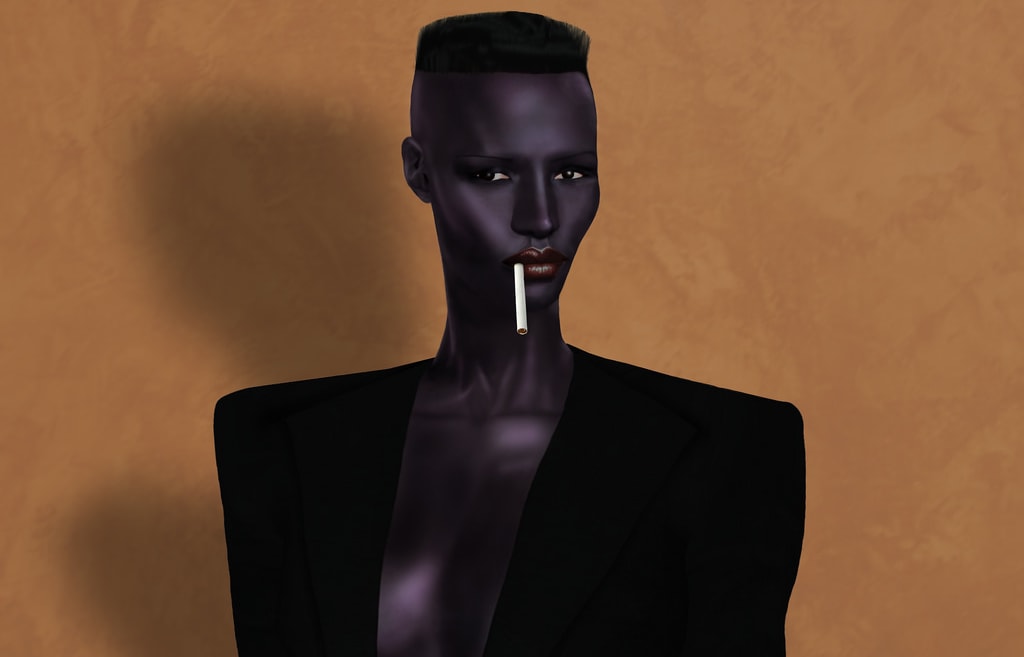
Photo: Flikr
The news that Grace Jones is coming here in March hit the nation with considerable force.
There were sudden unseemly gushings of nostalgia, excitement and joy all over social media. Ardent love was expressed, by people who seemed to be typing with trembling fingers.
Some people were beside themselves. I admit, I was one of them.
I was so excited, I almost felt the need for a cold shower.
Grace freakin’ Jones!
Here is the woman that made the most exciting music of the 1980s, in my view.
Between acting in a steady string of fairly rubbish movies, she helped pioneer a resolutely funky hybrid of disco, new wave and Jamaican dancehall that still sounds like no one else, before or since, with the occasional airy torch-song ballad chucked in just to mess with your head.
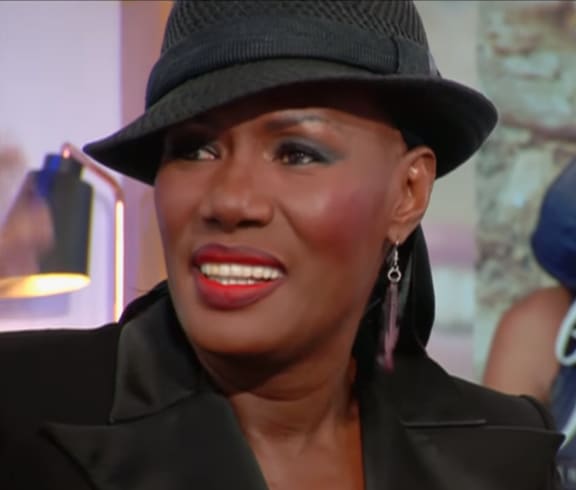
Grace Jones on a French talk show in 2016 Photo: Screen capture
Only Bowie, Prince and James Brown made music that kicked my lardy arse so often and so hard, and all three are now sadly dead.
Jones, meanwhile, is very much alive, and reputedly as eccentric as ever at the age of 69.
Never meet your heroes, or so they say, but I talked to her by phone in 2011, while she was back home in Jamaica visiting family.
Jones was due to perform here for the first time at the Grassroots Festival, which was later cancelled, and I got the only local interview.
I was star-struck, even after doing this sort of thing for decades. I felt as nervous as a newbie, fresh out of journalism school.
Not only was I in awe of Jones’ music, but she also had a reputation as a spectacularly strange critter who has hard work to interview.
I’d seen old film clips of her slapping a British chat show host on live TV. I’d read tales of her being escorted from trains and boats and planes after thermonuclear diva tantrums.
Even kids’ playgrounds are not safe: Jones was given a lifetime ban from all Disney properties after flashing her breasts at a Disney World show.
Her reputation for unpredictability was confirmed by a succession of shell-shocked hacks who met her. One startled female interviewer claimed that Jones suddenly pashed her out of the blue, grabbed her breast, then ran away up a London street, howling at the full moon like a randy wolf.
Add it up, and you were left with the impression that saying Grace Jones was crazy as a snake was likely to raise a libel suit from an irate reptile.
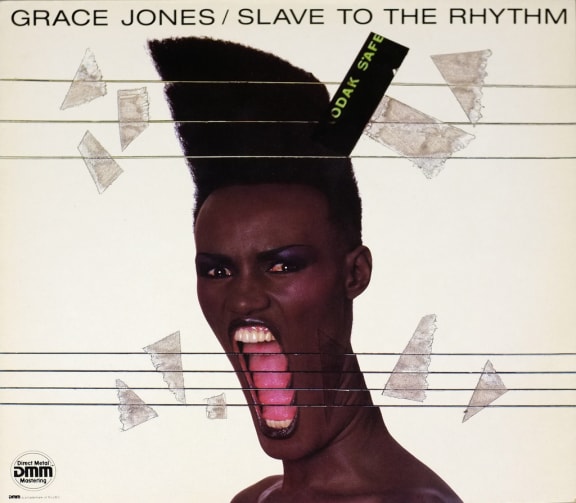
Album artwork for Slave To The Rhythm (1985) Photo: Flikr
But when she came on the line, she was utterly charming. And, she said… shy.
“It’s true,” she told me in a surprisingly deep voice. “Acting and performing music is something I do to overcome my natural shyness. It helps me because when you perform you can leave your own personality behind, step into this new role and create whatever you want to create. Performing allows you to express feelings you can’t normally let out.”
The way Jones tells it, her entire career could be viewed as an extended backlash against her uptight childhood. Born Grace Mendoza in Spanish Town, Jamaica, in 1948, she grew up in an intensely religious family. Her father and grandfather were both preachers; her younger brother, Bishop Noel Jones, now preaches on American TV.
“I was an extremely timid loner, growing up in Jamaica with a pentecostal preacher for a father,” she said.
“My childhood was extreme! No make-up. No radio. No TV. We had to cover our heads and have dresses below our knees, and there was a lot of physical discipline.
"We moved to upstate New York when I was thirteen and things didn’t get much better, stuck out there in the suburbs. I was the only black person in my school, and life at home was still very strict.
"I really wanted to break away, to experiment, to find out who I was and let myself go.”
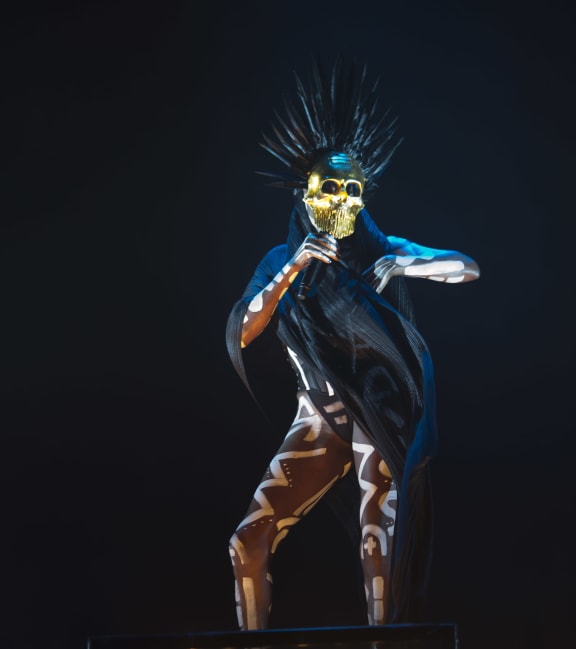
Grace Jones on stage in 2015 Photo: © Bruce Baker
After leaving home, she did just that. Jones studied drama at Syracuse University, became a professional go-go dancer, ran away with a motorcycle gang.
“They were very crazy years. Sometimes I got so wild I’d think, oh God, was that me? I even surprised myself! I certainly wasn’t dressing to cover my knees anymore, let’s put it that way!
To make herself more comfortable physically, Jones became “a bit of a nudist”, she said, and recommended that I might like to do the same.
“Walking around with no clothes on is very liberating for a person. You should try it! But remember: it works better in your own apartment than out on the street.”
Jones was later signed by a New York modelling agency and within a few short years, the shy girl from Spanish Town was flatting with actress Jessica Lange and model Jerry Hall, appearing on the cover of Vogue, flying to Paris for catwalk shows, and clubbing at Studio 54 with Mick Jagger and Andy Warhol.
“I just did these things for fun or cash while I waited to become an actress, but then music just found me, in a way. I made some early disco records in Paris, then followed the yellow brick road back to New York to perform in the clubs.
"It was great fun, going out every night dancing, hanging out with people like David (Bowie) and Andy (Warhol). Everybody danced like there was no tomorrow, and once my own music took off, I gave up modelling to pursue it seriously.”
Her best music from this era hasn’t aged a day. The first sign that something special was brewing came with the raw and thrilling title track to her fourth LP, 1980’s Warm Leatherette.
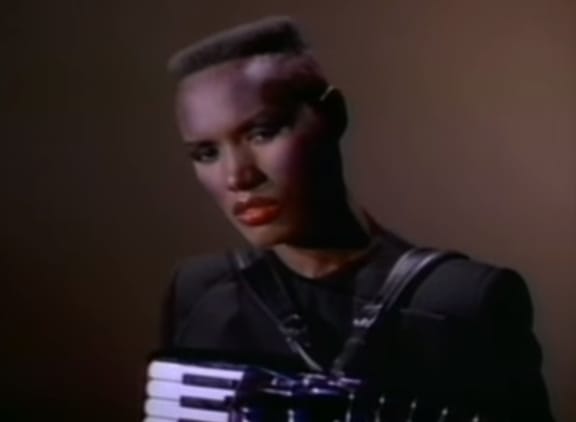
Grace Jones in the video clip for 'Libertango' Photo: Screen capture
But in my books, the most extraordinary cultural artefacts Jones has produced are her fifth and sixth albums, Nightclubbing (1981) and Living My Life (1982).
All three were pieced together with a crack all-star band at Compass Point Studios in The Bahamas and signalled a welcome change in direction after three generic late-70’s disco albums.
Jones decided to toughen up her sound by going back to her West Indian roots.
She added sparse New Wave synths from Parisian keyboard master Wally Badarou to the buoyant rhythms of her homeland, the latter courtesy of seasoned Jamaican session players Mikey Chung, Tyrone Downie, and Uziah “Sticky” Thompson and renowned reggae rhythm section, Sly and Robbie.
Nightclubbing remains her finest album, and barely a week goes by without me playing the bugger. Recorded in 1981 during a particularly hot streak of Compass Point sessions, it strikes me as the pinnacle of experimental 80s pop and still sounds as fresh as the day it was minted.
Part tropical heat, part New York cool, with enough sinister synthesizers and spiky guitars to draw in rock fans who previously hated disco, the album contains startling robo-funk re-interpretations of Iggy Pop’s Nightclubbing, The Police’s Demolition Man, and Bill Withers’ Use Me.
The latter in particular was an inspired choice. The highlight of the West Virginia soul man’s 1972 album Still Bill, Use Me finds the narrator berated by his friends for choosing a dodgy romantic partner.
This person is careless, abusive, just using him, he is told. But the singer hopes she keeps right on using him until he’s all used up.
When I talked to her, Jones admitted she was “terrible at relationships”, choosing the wrong man, or woman, on numerous occasions, regardless of what her friends thought.
Past lovers have included Swedish actor Dolph Lundgren, heroically flaky former model Janice Dickenson, numerous beefy bodybuilders, and Ivor Guest, the Fourth Viscount Wimborne, a British aristocrat related to Churchill and Princess Di.
Jones also has a 38-year-old son, Paulo, with French film director Jean-Paul Goude, who designed her spectacular early album covers.
'Use Me' is a song that could have been written especially for Jones, and she gives it new meaning here, speeding it up, adding synthesized whip-cracks, and delivering the lyrics in a stern deadpan, like some sort of lusty disco dominatrix.
Nightclubbing also contained some of Jones’ finest originals, her songwriting having come along in leaps and bounds since her earlier disco LPs.
Thirty six years after it was released, the album’s most famous song 'Pull Up To The Bumper' remains a sure-fire dancefloor filler in which a peerless ‘sex as parallel parking’ metaphor rides atop one of the funkiest rhythm tracks ever made.
Side Two of the original vinyl version of Nightclubbing found Jones experimenting with her own distinctive brand of romantic ballads, many of which sounded like some sort of peculiar French café dub, with breezy accordions bolted to giant basslines then nudged into the echo chamber.
But the album’s Side Two standout is surely 'Feel Up', its twitchy tropical rhythm cut through with barking dogs and the singer talking to a band-mate in broad Jamaican patois.
The year after Nightclubbing was released, Jones delivered a knockout follow-up album: Living My Life, recorded with the same players back in the Bahamas, the tracks a similar mix of spacious, airy ballads that showed her more tender side and hefty dancefloor arse-shakers.
Lead single 'Nipple To The Bottle' might just be the best tune she’s made to date: a fierce rebuke to a manipulative lover, with a crushing, low-slung bassline and unexpected twangs of country guitar-picking on the chorus.
Here in the South Pacific, we embraced it big time. 'Nipple To The Bottle' hit its highest chart placing in Aotearoa, nudging into the Top 20 in the American charts but making it all the way to Number Three in New Zealand.
There have been scatterings of other great tunes down the decades, too, of course. Every fan will have their own favourites.
But for me, the music is only part of a high-art, fashion-forward, gender-fluid package that continues to fascinate after so many other pop stars from the 1980s have long since fizzed and faded.
You have to admire Jones for remaining musically curious and conceptually brave.
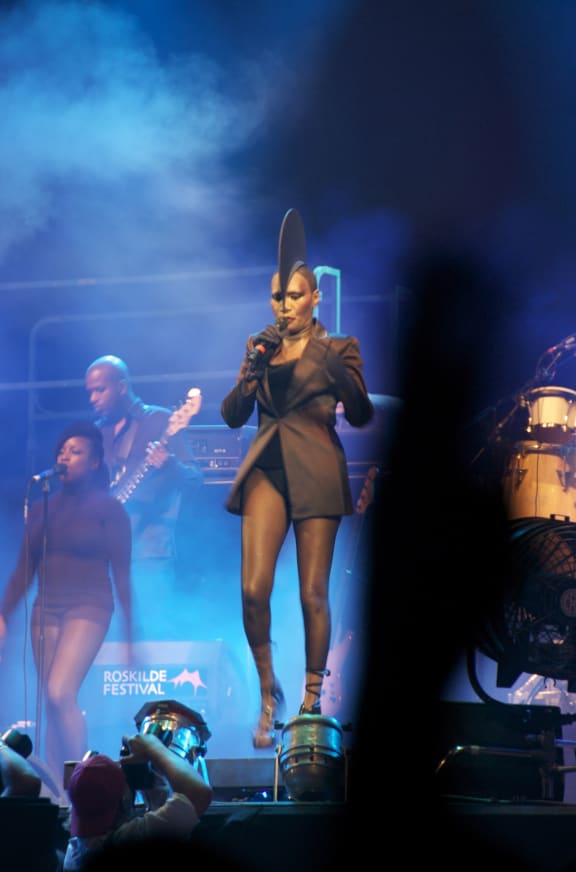
Grace Jones on stage in 2009 Photo: Wikimedia Commons
While many of her contemporaries have been reduced to trading on boomer nostalgia, Jones’ 2008 comeback album Hurricane was as forward-looking as the output of any hipster-come-lately, containing collaborations with Tricky, Brian Eno and Nigerian master drummer Tony Allen, among others.
That same year, she headlined a British music festival curated by Massive Attack, resplendent at 60 in a corset, thong and a succession of mad Philip Treacy hats.
When I talked to her in 2011, Jones was resting up in her homeland after a now legendary performance at London’s Royal Albert Hall; the ten costume changes included a zebra jumpsuit, an Egyptian Pharoah outfit, a silver tinfoil burqa, and an entirely backless red flower dress with matching G-string.
Her New Zealand shows are certain to be crammed with great songs and unreasonable outfits.
She is among the last of the true originals, and her best work encapsulates everything I love about pop music- melody, glamour, absurdity, spectacle, soul.
Jones also seems oddly undiminished by time. Where fellow 80’s pop icons such as Madonna, George Michael, Prince, Boy George and Michael Jackson either died, slid into irrelevance or began trying a little too desperately to please, she just carried right on being Grace: aloof and imperious, strikingly beautiful, refreshingly weird.
Grace Jones will play her first ever New Zealand shows in March:
- Friday March 2, Queenstown Events Centre
- Saturday March 3, Auckland City Limits, Western Springs

